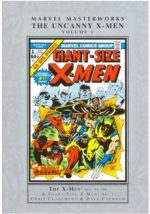
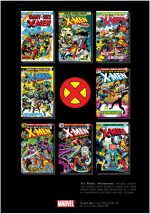
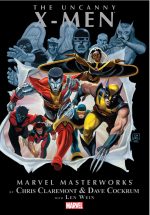
By Len Wein, Chris Claremont, Bill Mantlo, Dave Cockrum, Bob McLeod, Sam Grainger, Frank Chiaramonte & various (MARVEL)
ISBN: 978-0-7851-3702-3 (TPB) 978-0-7851-1192-4 (HB/Digital edition)
This book includes Discriminatory Content produced in less enlightened times.
Win’s Christmas Gift Recommendation: Timeless Mutant Masterpieces for all Blockbuster Comics Addicts… 9/10
In the autumn of 1963 The X-Men #1 introduced Scott (Cyclops) Summers, Bobby (Iceman) Drake, Warren (Angel) Worthington, Jean (Marvel Girl) Grey and Hank (The Beast) McCoy: very special students of Professor Charles Xavier. The teacher was a wheelchair-bound telepath dedicated to brokering peace and integration between the masses of humanity and the emergent off-shoot race of mutants dubbed Homo Superior; considered by many who knew him as a living saint.
After nearly eight years of eccentrically spectacular adventures the mutant misfits virtually disappeared at the beginning of 1970, during another periodic downturn in superhero comics sales. Just like the closing years of the 1940s, mystery men again faded away as supernatural mysteries and traditional genre themes once more dominated the world’s entertainment fields.
Although their title returned at the end of the year as a cheap reprint vehicle, the missing mutants were reduced to guest-stars and bit-players throughout the ongoing Marvel universe, whilst the bludgeoning Beast was opportunistically transformed into a scary monster to cash in on the horror boom. Then, as sales of the spooky stuff subsequently waned in 1975, Marvel Editor-in-Chief Roy Thomas green-lighted a bold one-shot as part of the company’s line of Giant-Size specials and history was made…
This fabulous compendium collection (available in luxurious hardcover, trade paperback and eBook editions) is perfect for newbies, neophytes and even old lags nervous about reading such splendid yarns on fragile but extremely valuable pulp paper. It celebrates the revival and unstoppable march to market dominance through the exuberant and pivotal early stories: specifically, collectively and cumulatively spanning May 1975 to August 1976 via Giant Size X-Men #1, and issues #94-100 of the definitely “All-New, All-Different” X-Men.
Tracing the reinvigorated merry mutants from young, fresh and delightfully underexposed innovations to the beginnings of their unstoppable ascendancy to ultimate comic book icons, in their own title and through an increasingly broad clutch of guest shots, the epic voyage begins with a classic mystery monster mash from Giant Size X-Men #1.
Len Wein & Dave Cockrum (the much-missed latter then a very red-hot property following his stint reviving DC’s equally eclectic fan-fave super-team Legion of Super-Heroes) detail in ‘Second Genesis!’ how the original squad -all but then-new Avengers recruit The Beast – have been lost in action. With no other choice Xavier is forced to scour Earth and the Marvel Universe for replacements…
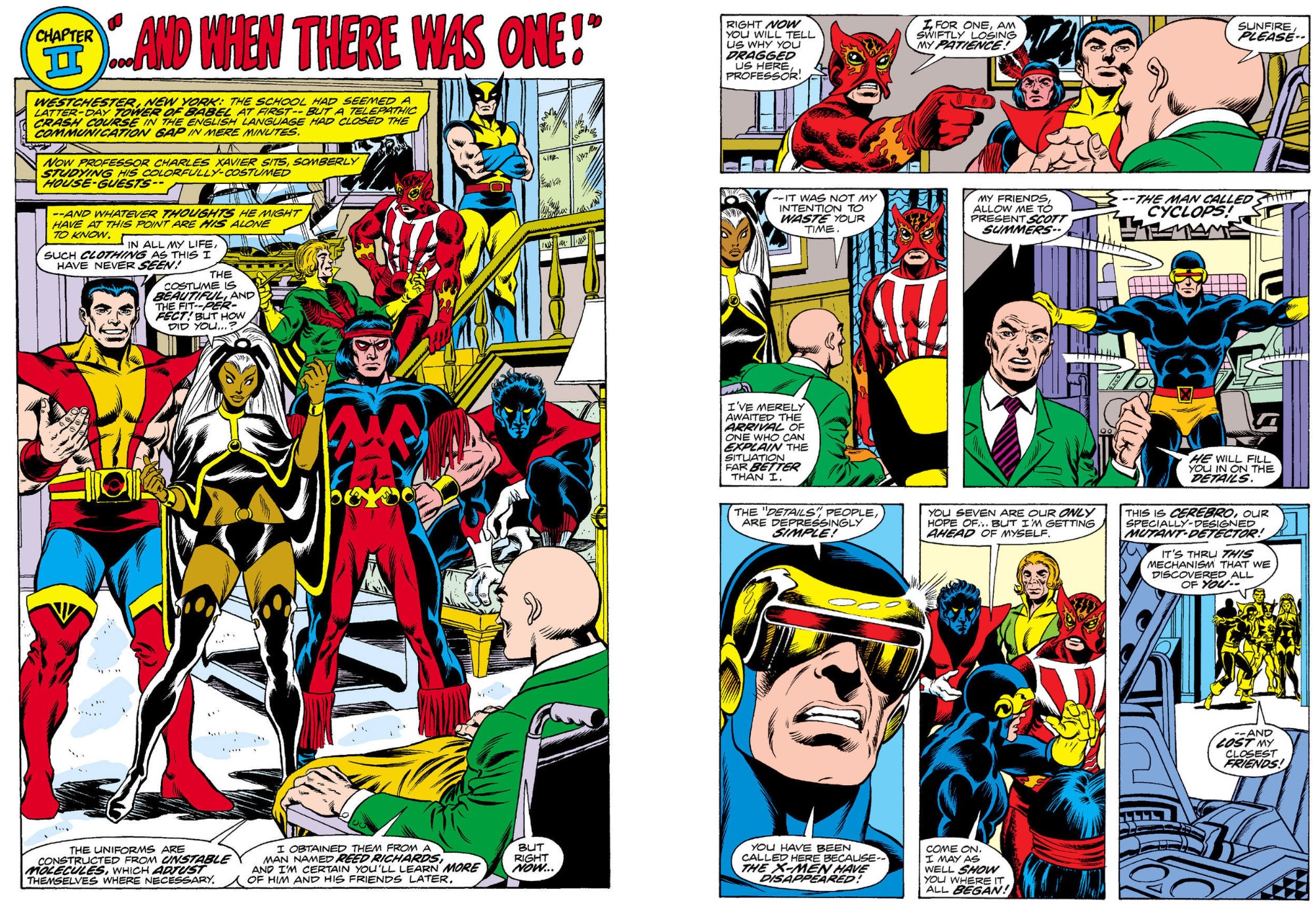
To occasional foes-turned-friends Banshee and Sunfire is added a one-shot Incredible Hulk adversary dubbed The Wolverine, but the bulk of time and attention is lavished upon original creations Kurt Wagner, a demonic-seeming German teleporter codenamed Nightcrawler; African weather “goddess” Ororo Monroe – AKA Storm; Russian farm boy Peter Rasputin who turns into a living steel Colossus and bitter, disillusioned Apache superman John Proudstar who is cajoled into joining the makeshift squad as Thunderbird. The second epic introductory chapter ‘….And Then There Was One!’ reintroduces battered, depleted but unbowed team-leader Cyclops who swiftly drills the newcomers to a semblance of readiness before leading them into primordial danger against monolithic threat ‘Krakoa… the Island That Walks Like a Man!’
Overcoming the phenomenal terror of a rampaging rapacious mutant eco-system and rescuing the “real” team should have led to a quarterly Giant-Size sequel, but so great was fan response that the follow-up adventure was swiftly reworked into a 2-issue tale for a rapidly reconfigured comic book which became a bimonthly home to the new team. X-Men #94 (August 1975) began ‘The Doomsmith Scenario!’ – plotted by editor Wein, scripted by Chris Claremont and with Bob McLeod inking man-on-fire Cockrum – in a smart Armageddon-thriller with a newly pared-down strike-squad deprived of Sunfire and still-recuperating Marvel Girl, Angel, Iceman, Havok (Scott’s brother Alex) and magnetic Lorna Dane.
The neophytes are called in by Beast to stop criminal terrorist Count Nefaria starting an atomic war. The insidious mastermind has seized control of the US Norad citadel with a gang of artificial superhumans and accidentally escalated a nuclear blackmail scheme into an inescapable countdown to holocaust. Thus, the untrained, unprepared mutants are the only hope of saving the world in epic conclusion ‘Warhunt!’ (inked by Sam Grainger).
One of the new team doesn’t make it back…
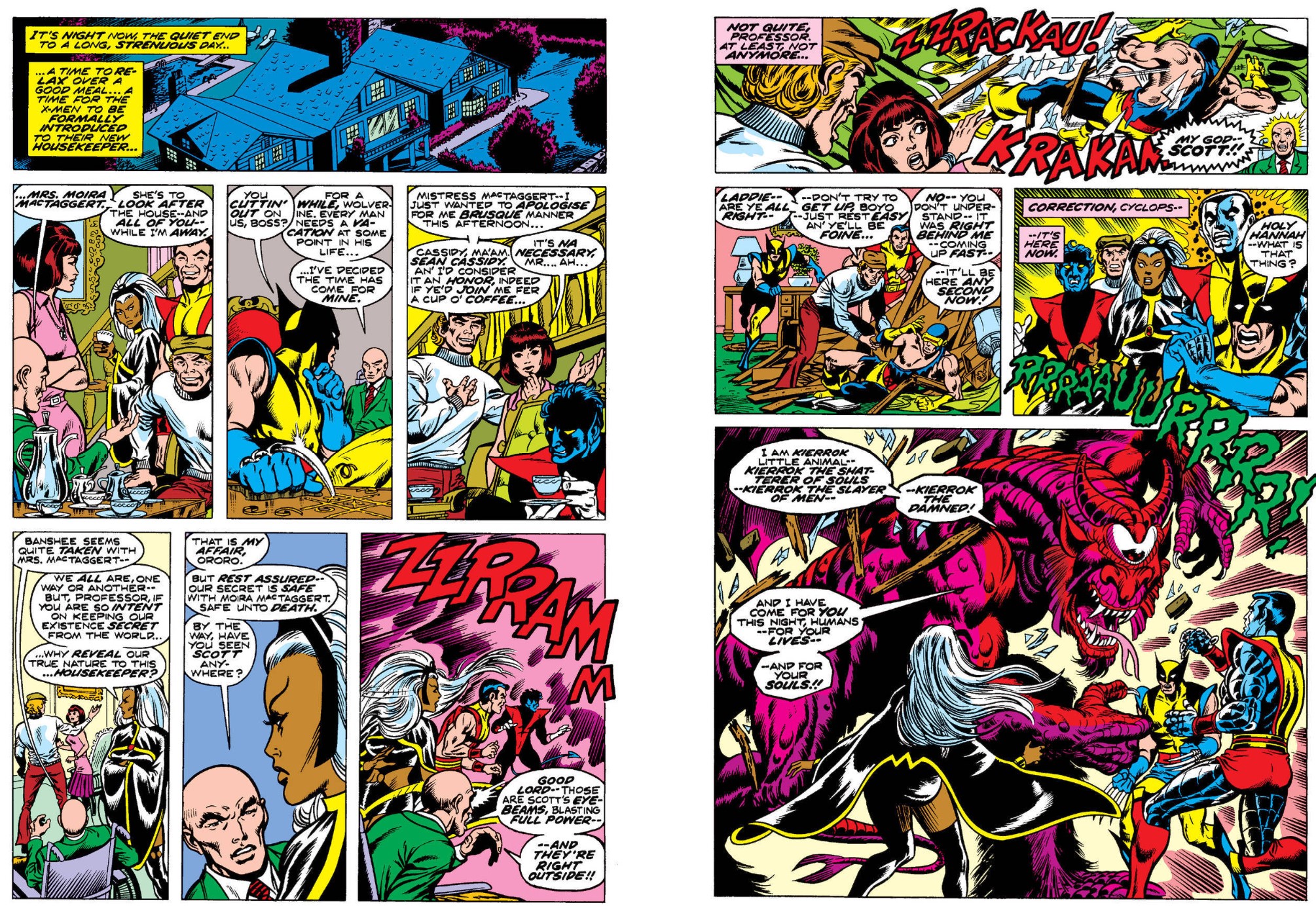
X-Men #96 saw Claremont take full charge of the writing (albeit with plotting input from Bill Mantlo) for ‘Night of the Demon!’ Here, guilt-wracked Cyclops blames himself for the loss of his teammate, and in his explosive rage accidentally unleashes a demonic antediluvian horror from Earth’s primordial prehistory for the heroes-in-training to thrash. The infernal Nagarai would periodically return to bedevil mankind, but the biggest innovation in this issue was the introduction of gun-toting biologist/housekeeper Moira MacTaggert and the first inklings of the return of implacable old adversaries…
A long-running, cosmically-widescreen storyline began in #97 with ‘My Brother, My Enemy!’ as Xavier – tormented by visions of interstellar war – tries to take a vacation, just as Havok and Lorna (finally settling on superhero nom de guerre Polaris) attack: apparently willing servants of a mysterious madman using Cyclops’ old undercover alter ego Eric the Red. The devastating conflict segues into a spectacular 3-part yarn, as pitiless robotic killers return under the hate-filled auspices of mutant-phobic Steven Lang (and his mysterious backers in Project Armageddon). The action opens with #98’s ‘Merry Christmas, X-Men… the Sentinels Have Returned!’…
With coordinated attacks capturing semi-retired Marvel Girl plus Wolverine, Banshee and Xavier, Cyclops and the remaining mutant heroes co-opt a space shuttle and storm Lang’s orbital HQ to rescue them in ‘Deathstar Rising!’ (inked by Frank Chiaramonte): another phenomenal all-action episode. The saga concludes on an agonising cliffhanger with the 100th issue anniversary tale. ‘Greater Love Hath No X-Man…’ (with Cockrum inking his own pencils) sees new X-Men apparently battle the original team before overturning Lang’s monstrous schemes forever. However, their catastrophic clash destroys the only means of escape and, as a gigantic solar flare threatens to eradicate the satellite-station, their only chance of survival means certain death for another X-Man…
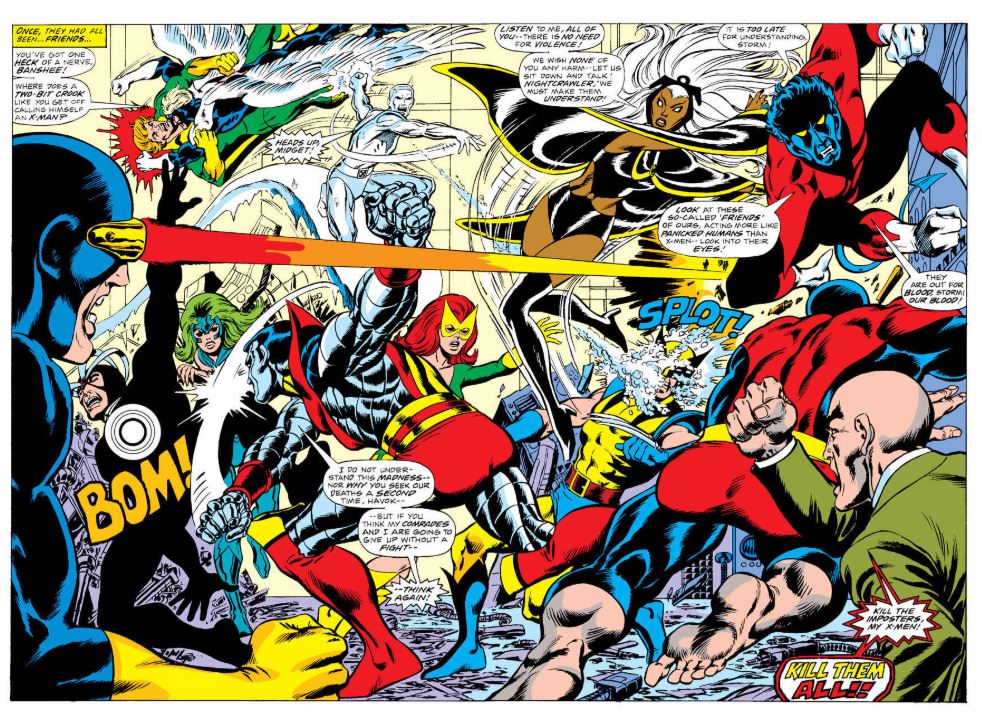
To Be Continued…
With even greater excitement and innovation to follow in succeeding issues, these superb comics classics revolutionised a moribund genre and led directly to today’s ubiquitous popular cultural landscape where superheroes are as common as cops, cowboys, monsters or rom-com Romeos. They even made it into movies without looking ridiculous…
Extras include an introduction by Claremont; issue covers by Gil Kane, Cockrum, Marie Severin, Sal Buscema & Rich Buckler; Kane’s cover for eventual all-reprint Giant-Size X-Men #2; Cockrum’s designs for The Outsiders (a Legion of Super-Heroes 5-page spin-off pitch rejected by DC); character designs for Phoenix, Colossus & Nightcrawler; the cover to F.O.O.M. #10 and caricatures of the X-Men creative team by Marie Severin; House ads and original art pages, roughs and covers by Kane & Cockrum completing the perfect primer/introduction to the New X-Men phenomenon.
The immortal epics compiled here are available in numerous formats but for a selection that will survive the continual re-readings of the serious, incurable fan there’s nothing to beat the sturdy and substantial full-colour feel of these Marvellous Masterwork editions.
© 2016 Marvel Characters, Inc. All rights reserved.



































